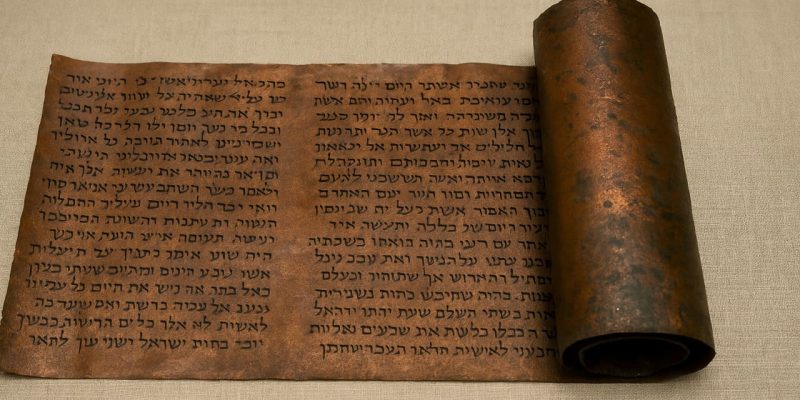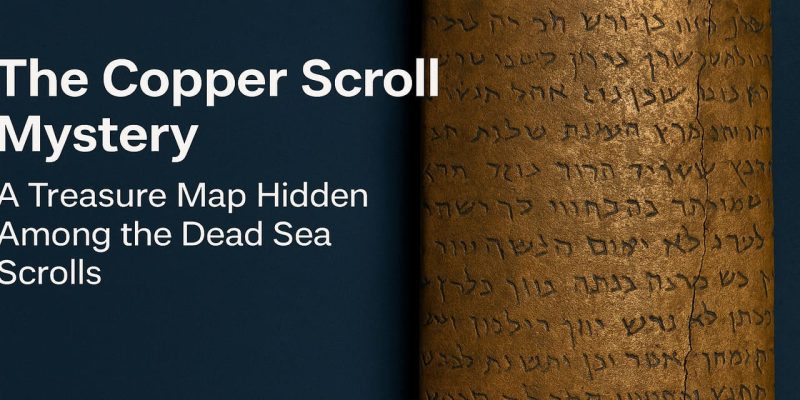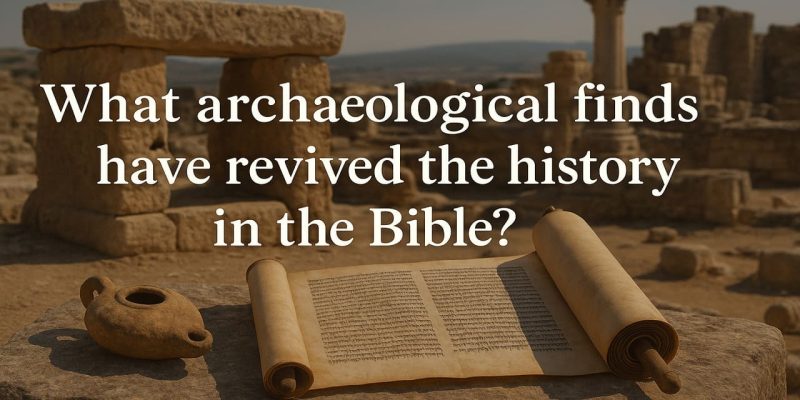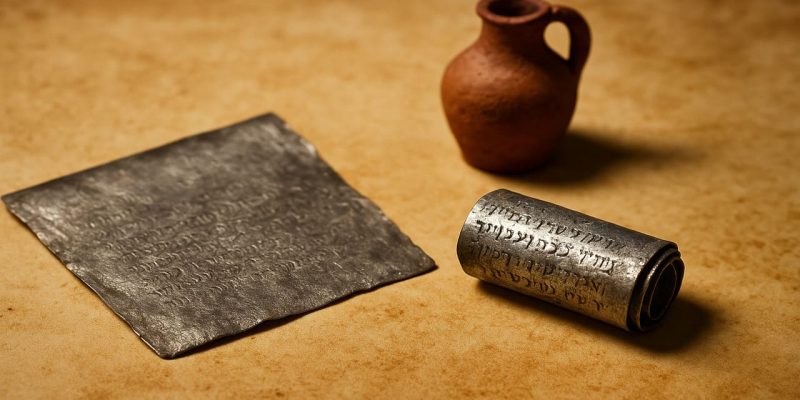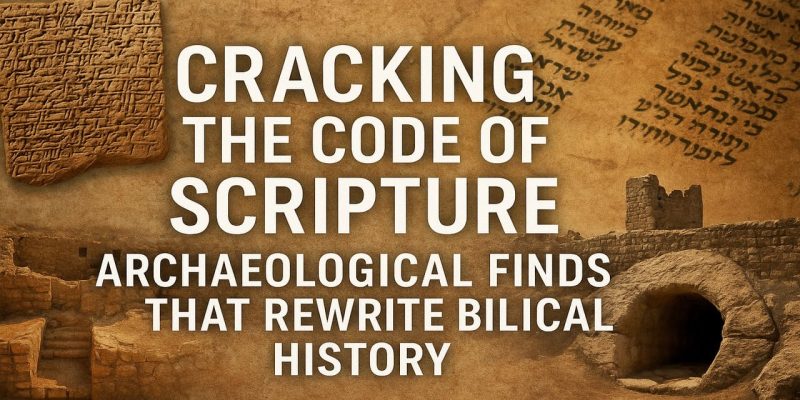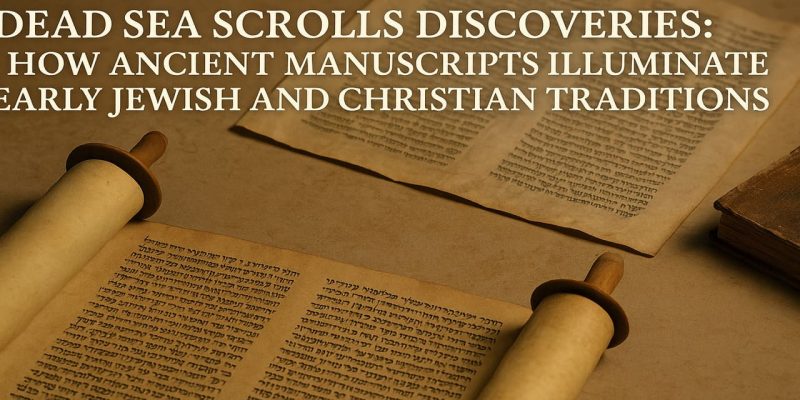Thorn Ville Church – In 1952, archaeologists exploring caves near Qumran in the Judean Desert came across one of the most remarkable finds in biblical archaeology—the Copper Scroll. Unlike the other Dead Sea Scrolls, which were written on parchment or papyrus, this text was inscribed on thin sheets of copper. The unusual medium immediately set it apart from the rest of the collection, sparking decades of debate and intrigue among scholars, historians, and treasure hunters alike.
The Copper Scroll was discovered in Cave 3 of Qumran. Initially, the corroded copper plates were so brittle that they could not be unrolled without breaking apart. To preserve the text, experts cut the scroll into sections, carefully revealing the writing inside. What they found was not a narrative, religious teaching, or commentary, but instead what appeared to be a treasure map.
A Treasure List Unlike Any Other Scroll
The Copper Scroll stands out because it contains a detailed inventory of hidden treasures. While other Dead Sea Scrolls provide insights into Jewish religious life, scripture, and sectarian rules, this scroll is essentially a catalog. It lists over sixty locations where vast amounts of gold, silver, and other valuables were supposedly buried.
The descriptions are surprisingly specific, including measurements of weights and references to landmarks. Some entries mention treasures hidden under steps, near aqueducts, or beneath ruins. The total wealth described is staggering, leading some to speculate whether the scroll refers to actual hidden treasures of the Second Temple or whether it is symbolic.
Read More : The Ivory Cherub: Tracing the Heavenly Guardians of Ancient Israel
Theories About Its Origins
Ever since its discovery, the Copper Scroll has sparked a wide range of theories. Some scholars suggest that it records the wealth of the Jerusalem Temple hidden away before the Roman conquest in 70 CE. Others argue that it could have been created by the Qumran sect itself, preserving valuables in secret locations to protect them from enemies.
There is also debate over whether the treasures were real or symbolic. The extraordinary amounts of gold and silver mentioned seem almost implausible, leading some to believe the list was either exaggerated or purely allegorical. Yet the specificity of the instructions down to the cubits of depth suggests that the writers intended it to be taken literally.
Archaeological Efforts and Treasure Hunts
Naturally, the idea of a treasure map has inspired attempts to locate the hidden wealth described in the Copper Scroll. Archaeologists, adventurers, and even governments have tried to match the descriptions with known sites in Israel. Despite these efforts, no definitive treasure linked to the scroll has ever been found.
One of the difficulties is that the landmarks referenced may no longer exist. Earthquakes, construction, and centuries of change in the landscape have altered the region significantly. Another challenge is that the scroll may have deliberately used coded or misleading directions to conceal the treasures more effectively. This uncertainty has only deepened the scroll’s mystery.
Also Read : Unbelievable! 98-Year-Old Lois Dodd Finally Gets the Global Recognition She Deserves
Significance in the Context of the Dead Sea Scrolls
While the Copper Scroll is often highlighted for its treasure references. Its importance also lies in how it broadens our understanding of the Dead Sea Scrolls. The collection, discovered between 1947 and 1956, provided invaluable insights into Jewish religious practices around the time of the Second Temple. The Copper Scroll, though unique, is part of this wider narrative.
It suggests that the Qumran community or at least some group connected to it was deeply concerned with safeguarding wealth. Whether this was temple treasure, community resources, or symbolic teaching remains unknown. Its presence in the same caves as other religious scrolls blurs the line between faith, survival, and secrecy in a time of upheaval.
The Copper Scroll in Modern Imagination
Beyond academia, the Copper Scroll has captured the imagination of the public. Its image as a mysterious treasure map resonates with adventure stories and legends of lost gold. Books, documentaries, and even fictional tales have drawn inspiration from its enigmatic list of hidden wealth.
The unanswered questions continue to fuel speculation. Were these treasures ever real? If they were, did someone find them long before modern archaeologists searched? Or do they still remain buried, awaiting discovery beneath the Judean Desert? The Copper Scroll embodies the timeless allure of hidden riches and the mysteries of history yet to be solved. The Copper Scroll, found near Qumran, lists hidden treasures unlike any Dead Sea Scroll. Explore its mystery, history, and enduring allure.
The Legacy of Mystery and Exploration
Instead of a conclusion, it is fitting to look at the Copper Scroll’s legacy. More than seven decades after its discovery, it continues to inspire exploration, debate, and fascination. Whether viewed as a practical inventory, a coded religious text, or a mythic treasure map, the scroll symbolizes humanity’s enduring quest for knowledge and discovery.
The Copper Scroll reminds us that history is layered with secrets waiting to be uncovered. It may never yield its promised treasures, but its true value lies in the enduring mystery that challenges scholars and dreamers alike to keep searching.

